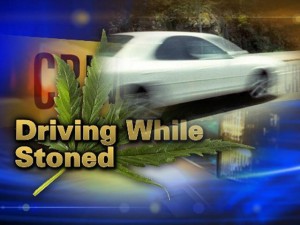 Let us provide a rational answer to a nonsensical question. It is a nonsensical question because blood is never impaired by THC. Never. Alcohol doesn’t impair blood either. These drugs only impair the brain, not the blood.
Let us provide a rational answer to a nonsensical question. It is a nonsensical question because blood is never impaired by THC. Never. Alcohol doesn’t impair blood either. These drugs only impair the brain, not the blood.
We can only test for drug content in the brain by means of an autopsy, something most drivers would reasonably object to.
We test blood as a surrogate for what’s in the brain. For alcohol, blood is a very good surrogate. Alcohol is a tiny, water-soluble molecule that rapidly crosses the blood-brain barrier and quickly establishes and maintains an equilibrium concentration between what’s in the blood and what’s in the brain.
Blood is a terrible surrogate for learning the amount of THC in the brain. It’s used because we blindly follow the precedence set by alcohol, perhaps even believing the pot lobby’s mantra that marijuana should be regulated like alcohol. It’s also used because we haven’t proven anything else that’s any better. Oral fluid likely is somewhat better, but that may only be because it can be collected more quickly at the roadside.
Blood is a terrible surrogate for THC because unlike alcohol, THC is fat-soluble. This results in three major differences in behavior compared with alcohol:
First, THC’s concentration in the blood rapidly drops as it is absorbed by the brain and other fatty tissues. When starting to smoke a joint, the THC level will be very high in the blood and very low in the brain. The brain’s THC level climbs rapidly at the same time that the feeling of being high continues to increase. Since the brain acts like a sponge, soaking up the insoluble THC from the blood, THC concentration in the brain continues to rise while it is still declining in blood. Cadaver studies show THC can even remain in the brain when none can be found in the blood.
Second, marijuana addicts and other daily users can develop a tolerance to some, but not all of the impairing effects of THC.
A per se level that might be appropriate for addicts and other heavy users is a license to drive stoned for occasional and inexperienced users.
Third, the normal time from arrest to taking a blood sample is an hour, two hours case of a serious crash, and three or more hours if a warrant is required to draw blood. Since the maximum blood level of THC drops an average of 73% within the first twenty-five minutes after starting to smoke a joint, blood test results will dramatically understate the amount of THC at the time of arrest.
Perhaps this explains why researchers agree that marijuana impairs driving, but there is no good correlation between forensically-determined blood levels of THC and levels of impairment.
The fact is that there is no blood level of THC above which, everyone is impaired, and below which, no one is impaired.
None of this proves it’s safe to drive after smoking pot. It’s not. It simply explains why a single piece of evidence (a defined per se limit of THC in blood) cannot scientifically pave that someone was impaired.
A preferred alternative is “Tandem per se” that relies on two pieces of evidence. Using this approach, a person would be guilty of driving under the influence of drugs per se if:
- The driver was arrested by an officer who had probable cause, based on the driver’s demeanor, behavior and observable impairment to believe the driver was impaired; and
- The driver had any amount of an impairing substance in their blood, oral fluid, or breath.
